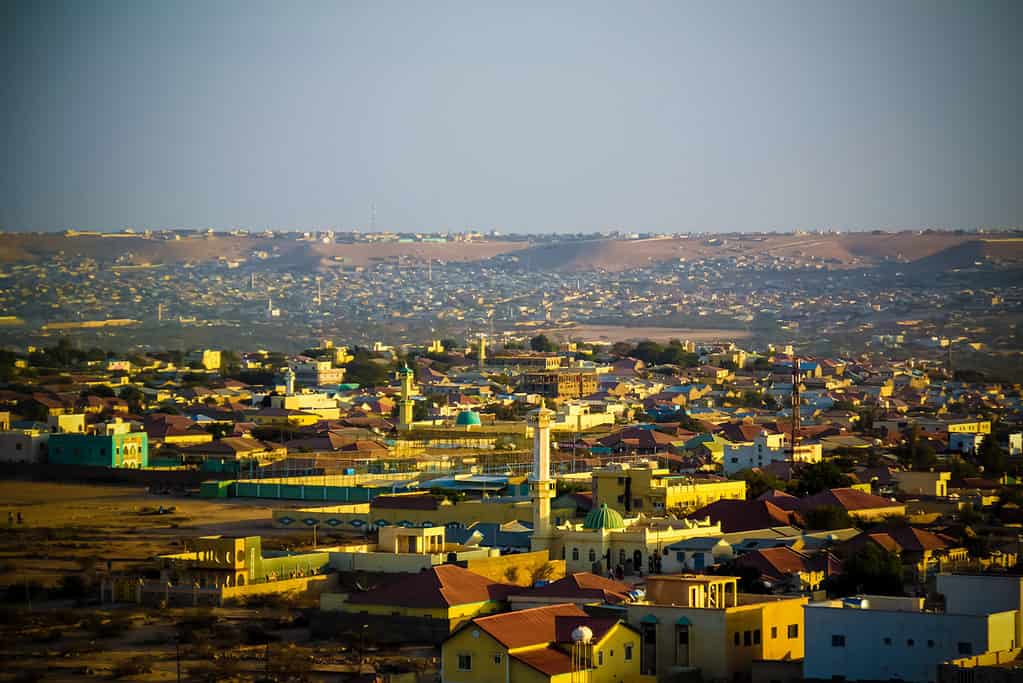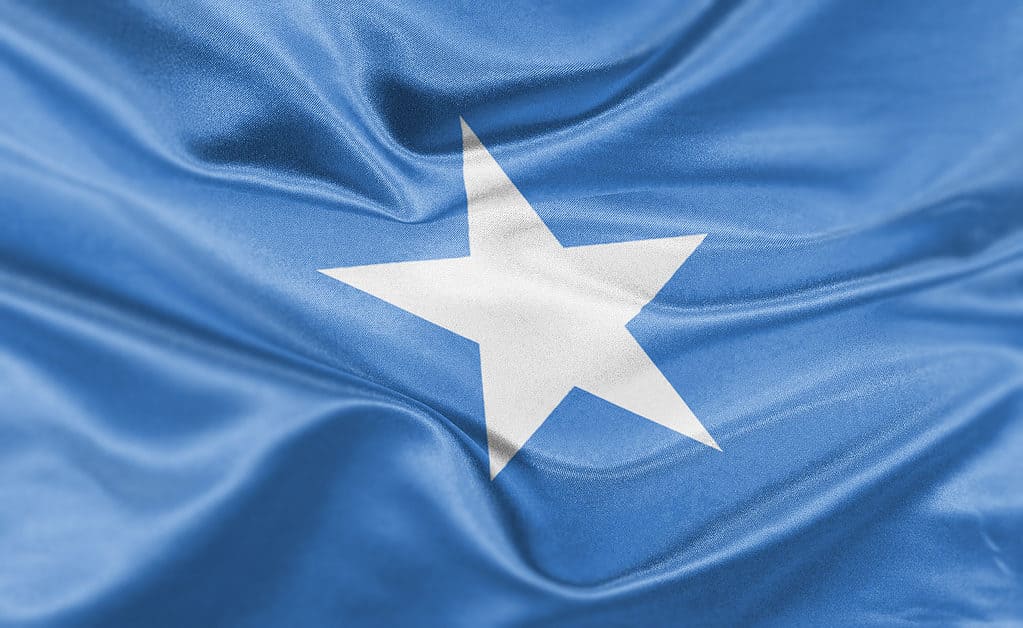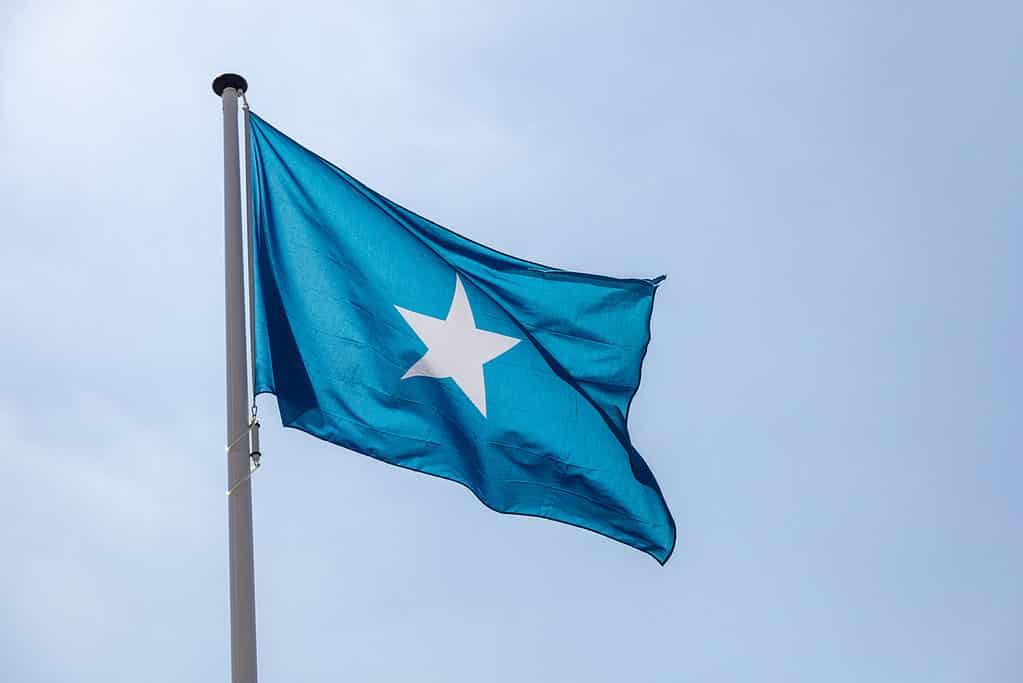Somalia, officially known as the Federal Republic of Somalia, is an African country located in the easternmost part of Africa. Due to its strategic location in the Horn of Africa, Somalia is on record as one of the first lands to be settled in by the earliest hunter-gatherers after Ancient Egypt, Nubia, the Sahel, and the Maghreb. Somalia extends from the south of the Equator northward to the Gulf of Aden. It occupies an important geopolitical position between sub-Saharan Africa and the countries of Arabia and southwestern Asia. The country also boasts of the longest coastline on Africa’s mainland and is bordered by Ethiopia to the west, Djibouti to the northwest, the Indian Ocean to the east, and Kenya to the southwest.
The country is home to an estimated population of around 17.1 million and is largely described as Africa’s most culturally homogeneous country, with 85% of its population ethnic Somalis and more than 95% Muslims. The official languages of Somalia are Somali and Arabic. Over 2 million of the inhabitants of Somalia reside in the country’s capital and largest city, Mogadishu, located just north of the Equator on the Indian Ocean.
According to ancient history, Somalia was an important commercial center, and its location was proposed to correspond with the ancient Land of Punt, known for its trade with the Ancient Egyptians, Greeks, Romans, Persians, and the states of ancient India.
There are many interesting things to learn about Somalia: the unending power tussle, colonial wars, and the more recent civil wars that shaped its history. How did these past turbulences affect the country’s present state? Most importantly, what role does the Somalian flag play in reuniting a divided nation? Keep reading to find out.
Founding of Somalia
In the 19th century, Britain and Italy established colonies of British Somaliland and Italian Somaliland in the Horn of Africa in 1884 and 1889, respectively. On July 1, 1960, the two Somali lands united, and The Republic of Somalia was formed by the federation of a former Italian colony and a British protectorate.
A new government emerged with Somali native Aden Abdullah Osman Daar as President and Abdirashid Ali Shermarke as Prime Minister from July 12, 1960, to June 14, 1964. On July 6, 1967, Abdirashid Ali Shermarke continued his rule as Somalia’s President until his assassination on October 15, 1969.
Characteristics of Somalia

©iStock.com/HomoCosmicos
Somalia is characterized by geographic extremes. The climate is mainly hot and dry. Consequently, the landscape is dominated by the thornbush savanna and semidesert. While there are several pronounced river valleys and a mountainous coastal zone in the north, the rest of the country is extremely flat. This condition provides a clear path with few natural barriers for the nomads and their livestock.
The Somali people make up the greatest percentage of Somalia’s population. Although divided into numerous clans, their ancestry can be traced back to a single father. The clans are further divided into subclans. The interfluvial area of southern Somalia is dominated by the Rahanwayn and the Digil. Together, they comprise the Sab, a community of farmers and agropastoralists.
Other clan families include the Daarood of northeastern Somalia, the Ogaden, and the Hawiye, dominating the area on both sides of the middle Shabeelle and south-central Somalia. The Isaaq are inhabitants of the central and western parts of northern Somalia, with the Dir predominantly living in the northwestern corner of Somalia. The Tunnis are settled on the stretch of coast between Marca and Kismaayo, and the Bagiunis live toward the Kenyan border, the narrow coastal strip, and offshore islands.
Several dialects of Somali are spoken in Somalia. However, despite the numerous regional dialects, Somali is understood throughout the country and is marked an official language. The second official language is Arabic, spoken chiefly in northern Somalia and the coastal towns across the ocean from Saudi Arabia.
Owing to Somalia’s colonial past, many of its citizens have a strong command of English and Italian. Both languages, in addition to Somali, are most instrumental in teaching at the country’s colleges and universities.
History and Symbolism of the Flag of Somalia

©iStock.com/husayno
The Somali flag, designed by Somali scholar, Mohammed Awale Liban, was adopted on October 12, 1954. After World War II, areas in the Horn of Africa—populated mainly by Somalis—were divided among Ethiopia, France, Britain, and Italy. The former Italian Somalia was promised independence, and following this prospective decision, a white star was chosen as the national symbol in preparation for the independence to come.
The Somali flag consists of a dominant light blue background and a five-pointed white star at the center. The five-pointed white star represented the unity of the five major regions where the Somali ethnic group formed the majority: Djibouti, Somaliland, the Somali region in Ethiopia, and the North Eastern Province in Kenya.
However, the flag no longer represents all ethnic groups. On October 12, 1954, it was transformed from an ethnic flag and officially hoisted as Somalia’s national flag. Presently, the star is known to denote the sky as well as the Gulf of Aden, Guardafui Channel, and the Somali Sea, which flank the country.
How Did Colonization Affect the Flag of Somalia?

©iStock.com/Rawf8
At the beginning of the 20th century, native rebellion within British Somaliland challenged British control forcing the British to abandon the interior of Somaliland and withdraw to the coastal regions in 1910. Italy took the opportunity to extend its control inland, taking over many of the regions the British had abandoned. However, following World War II, Italy relinquished control of Somalia, and the United Nations took charge. Somalia became a UN trust territory under the Italian administration until 1960, when Somalia was granted independence.
The choice of the colors of the Somali flag was primarily influenced by the United Nations (UN) flag, in reflection of the role that the UN played in assisting Somalia to independence. The new national flag, designed in 1954, embodied the message of unity and peace and became official on June 26, 1960, in Somaliland and five days later in the former Italian Somalia.
Up Next:
- The Flag of Portugal: History, Meaning, and Symbolism
- The Somali Region
- Animals By Location
- The Flag of Kenya: History, Meaning, and Symbolism
The post The Flag of Somalia: History, Meaning, and Symbolism appeared first on AZ Animals.
from Animal News, Facts, Rankings, and More! - AZ Animals https://ift.tt/MIiGz1u